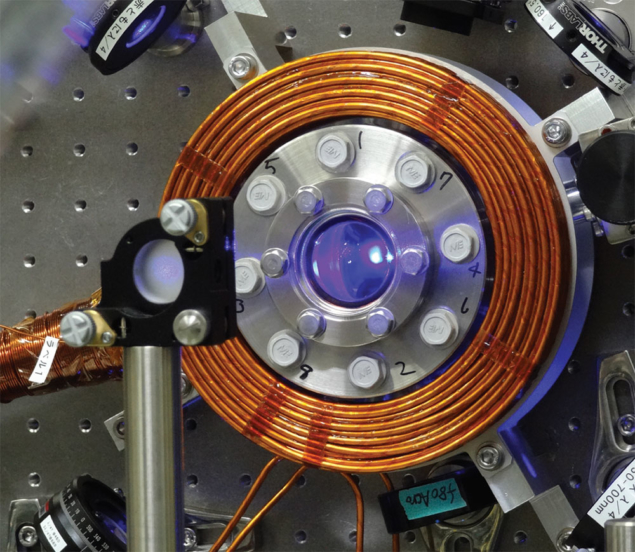
On 1 January a new virtual centre devoted to some of the most precise measurements in science was established by researchers in Germany and Japan. The Centre for Time, Constants and Fundamental Symmetries will offer access to ultra-sensitive equipment to allow experimental groups in atomic and nuclear physics, antimatter research, quantum optics and metrology to collaborate closely on fundamental measurements. Three partners – the Max Planck Institutes for nuclear physics (MPI-K) and for quantum optics (MPQ), the National Metrology Institute of Germany (PTB) and RIKEN in Japan – agreed to fund the centre in equal amounts with a total of around €7.5 million for five years, and scientific activities will be coordinated at MPI-K.
A major physics target of the German–Japanese centre is to investigate whether the fundamental constants really are constant or if they change in time by tiny amounts. Another goal concerns the subtle differences in the properties of matter and antimatter, namely C, P and T invariance, which have not yet shown up, even though such differences intrinsically must exist, otherwise the universe would consist of almost pure radiation. Closely related to these tests of fundamental symmetries is the search for physics beyond the Standard Model. The broad research portfolio also includes the development of novel optical clocks based on atoms, nuclei and highly charged ions.
“It is fascinating that nowadays manageable laboratory experiments make it possible to investigate such fundamental questions in physics and cosmology by means of their high precision”, says Klaus Blaum of MPI-K.
Stringent tests of fundamental interactions and symmetries using the protons and antiprotons available at the BASE experiment at CERN are another key aspect of the German–Japanese initiative, explains Stefan Ulmer, co-director of the centre, chief scientist at RIKEN, and spokesperson of the BASE experiment: “This centre will strongly promote fundamental physics in general, in addition to the research goals of BASE. Given this support we are developing new equipment to improve both the precision of the proton-to-antiproton charge-to-mass ratio as well as the proton/antiproton magnetic moment comparison by factors of 10 to 100.”
To reach these goals, the researchers intend to develop novel experimental techniques – such as transportable antiproton traps, sympathetic cooling of antiprotons by laser-cooled beryllium ions, and optical clocks based on highly charged ions and thorium nuclei – which will outperform contemporary methods and enable measurements at even shorter time scales and with improved sensitivity. “The combined precision-physics expertise of the individual groups with their complementary approaches and different methods using traps and lasers has the potential for substantial progress,” says Ulmer. “The low-energy, ultra-high-precision investigations for physics beyond the Standard Model will complement studies in particle physics.”





